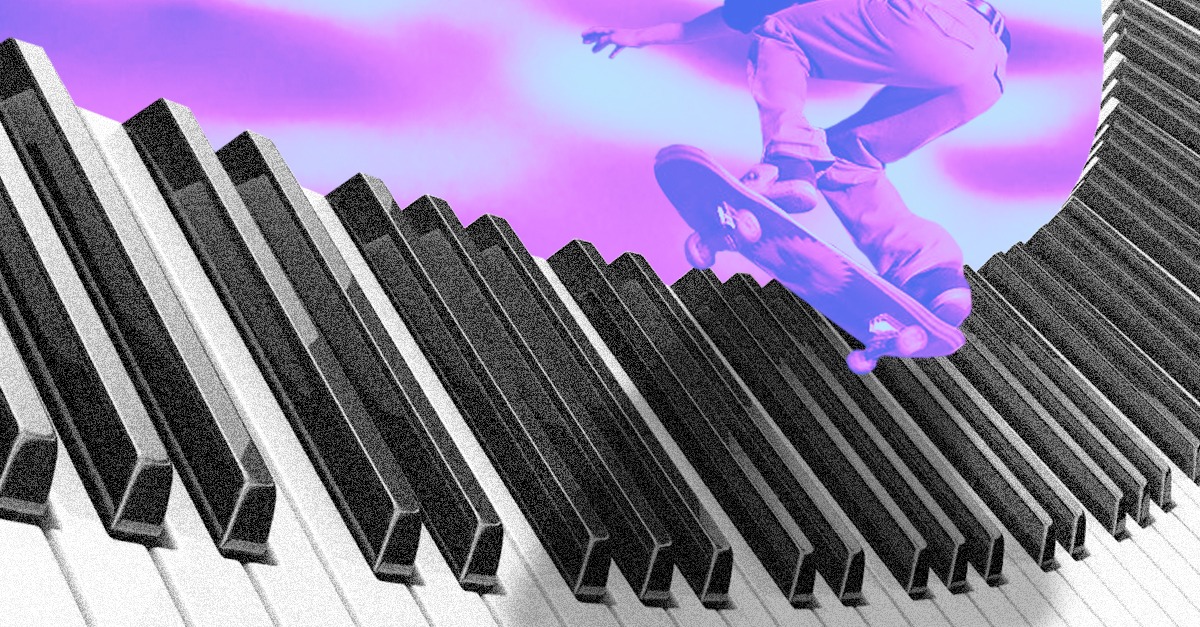
What is the Supertonic? How to Use an Essential Scale Degree

Each degree of the scale plays a distinct role in a musical composition.
While there are some you probably know already from basic music theory, the others are worth understanding too—especially the supertonic.
The supertonic has a fresh and versatile sound that’s on trend right now in pop.
In this article I’ll explain what it is, why it works and how to use it in your own tracks.
Let’s get started.
Theory guides, production tips, new free plugins, gear guides and more—delivered weekly
Keep up with the LANDR Blog.
What is the supertonic?
The supertonic is another name for scale degree two in a major or minor scale.
It’s part of a set of proper names for the scale degrees that associate them with their harmonic function.
In ascending order, they are: tonic (1), supertonic (2), mediant (3), subdominant (4), dominant (5), submediant (6) and leading tone (7).
These technical terms for the scale degrees seem complicated, but they can help you put notes in context based on their harmonic function.
The supertonic is another name for scale degree two in a major or minor scale.
For example, a dominant seventh chord must always contain the scale’s leading tone with the dominant as the root.
Why focus on the supertonic?
Once you give the scale degrees a name, you can identify situations where their function plays a role in the melody or harmonic progression.
The supertonic is a great example because of how commonly it’s used in modern pop songs.
It has a unique quality as a melodic resting place that’ll you’ll recognize once you see how it works.
It’s also the same scale degree as the 9th chord extension often heard in 9th chords from jazz and R&B.
Beyond that, it’s the root note of the ii chord in major, which is found in some of the most common chord progressions, including the ii-V-I in jazz.
Given all that, it’s worth investigating how the supertonic can sound as you write songs or produce tracks.
Where can you use the supertonic?
With the basics covered, here are some ways you can use the supertonic in your music.
1. As a chord extension
As I mentioned before, the 9th is one of the most common chord extensions found on major and minor seventh chords.
Shifted up an octave, the 9th adds a smooth and sophisticated sound that doesn’t change the chord’s overall quality.
Chords with 9th extensions are common in jazz, gospel and R&B, so it’s important to learn them for your harmonic vocabulary.
2. As a melodic center
The supertonic shows up most often in modern music as a strong note in a melodic line.
Shifted up an octave, the 9th adds a smooth and sophisticated sound that doesn’t change the chord’s overall quality.
There’s a trend right now in pop that features simple, singable melodies that don’t stray too far from one or two notes that work over each chord in the progression.
The supertonic is an obvious choice to highlight in lines like this since it doesn’t feel too strongly tied to a single chord.
Here’s a video explaining exactly how this effect works:
3. As a chord root
The supertonic is essential in chord progressions that contain the ii chord.
This is especially evident in the classic ii-V-I Often voiced in root position, the supertonic contributes to the strong feeling of root motion heard in classic jazz workouts like “Rhythm Changes.”
Hot tip: The ii7 in minor takes on a different quality due to the makeup of the minor scale. In a minor key, it includes the b5 note from scale degree 6. The resulting chord is a m7b5 which can be heard in minor ii-V-i progressions like the classic standard “Autumn Leaves.”
4. As a suspension
You might think of suspensions as only motion from scale degrees 4-3. But in early music, 2-1 (or 9-8) was considered a valid suspension, as was 2-3.
If the song’s harmony rests on the tonic with the supertonic tied over, consider these two options for a unique type of suspension.
Supertonic sound
The supertonic might seem like a simple concept, but once you dig deeper you’ll find it deserves special attention.
From catchy modern melodies to classic jazz, there are plenty of applications for this important scale degree.
If you’ve made it through this article you’ll have a great start for working with the supertonic.
Gear guides, tips, tutorials, inspiration and more—delivered weekly.
Keep up with the LANDR Blog.




